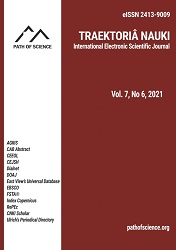Time-Kill Kinetic Effect of Sodium Citrate, Sodium Nitrite and Cinnamaldehyde Against Biofilm Forming Escherichia coli O157:H7
Time-Kill Kinetic Effect of Sodium Citrate, Sodium Nitrite and Cinnamaldehyde Against Biofilm Forming Escherichia coli O157:H7
Author(s): Jauro Hadiza Abubakar, Iliyasu Mahmud Yerima, Bashir Ismail Olawale, Abdulrahman Ahmad, Musa Usman, Ahmed Faruk UmarSubject(s): Agriculture, Health and medicine and law, Sociobiology
Published by: Altezoro, s. r. o. & Dialog
Keywords: food additives; inhibitory effect; time-kill kinetics; biofilm-forming Escherichia coli O157:H7;
Summary/Abstract: Food safety is a significant concern of every sector of the food industry. Survival of Escherichia coli O157:H7 with biofilm-forming potential in commercial food premises is a possible danger to consumers’ health, especially in societies where most of the population depend on it for their daily meals. Preservation of fresh food quality being of utmost importance, new innovative means of inhibiting pathogenic microorganisms in foods are being evaluated to be effective at destroying microorganisms and preserving the physical and organoleptic properties. This study aimed to inhibit biofilm formation of Escherichia coli O157:H7 by food additives; sodium citrate, sodium nitrite and cinnamaldehyde. The isolate obtained was subjected to Gram’s staining and various biochemical identifications and later confirmed by the latex agglutination test. The Escherichia coli O157:H7 was further subjected to a biofilm formation potential test on Congo red media. Antimicrobial susceptibility testing was conducted to obtain the susceptibility/resistance pattern of the isolate to the food additives. The MIC, MBC and time-kill kinetics effect was determined following CLSI 2017 guideline. The highest growth inhibition zone of 31 mm was exhibited by cinnamaldehyde, followed by sodium nitrite with 26 mm and sodium citrate with 13 mm. The MIC was determined to be 2.5 mg/ml for sodium citrate, 0.25 mg/ml for sodium nitrite and 0.125 µl/ml for cinnamaldehyde. Sodium citrate was found to be bacteriostatic between 6-8 hrs with 72.9 % reduction, sodium nitrite and cinnamaldehyde exhibit both bacteriostatic and bactericidal effects between 2-24 hrs with percentage inhibition of 65-90 % and 63-100 %, respectively. This study showed that sodium citrate, sodium nitrite and cinnamaldehyde exerted strong antimicrobial properties indicating their potential as suitable preservatives.
Journal: Traektoriâ Nauki
- Issue Year: 7/2021
- Issue No: 12
- Page Range: 1012-1018
- Page Count: 7
- Language: English

